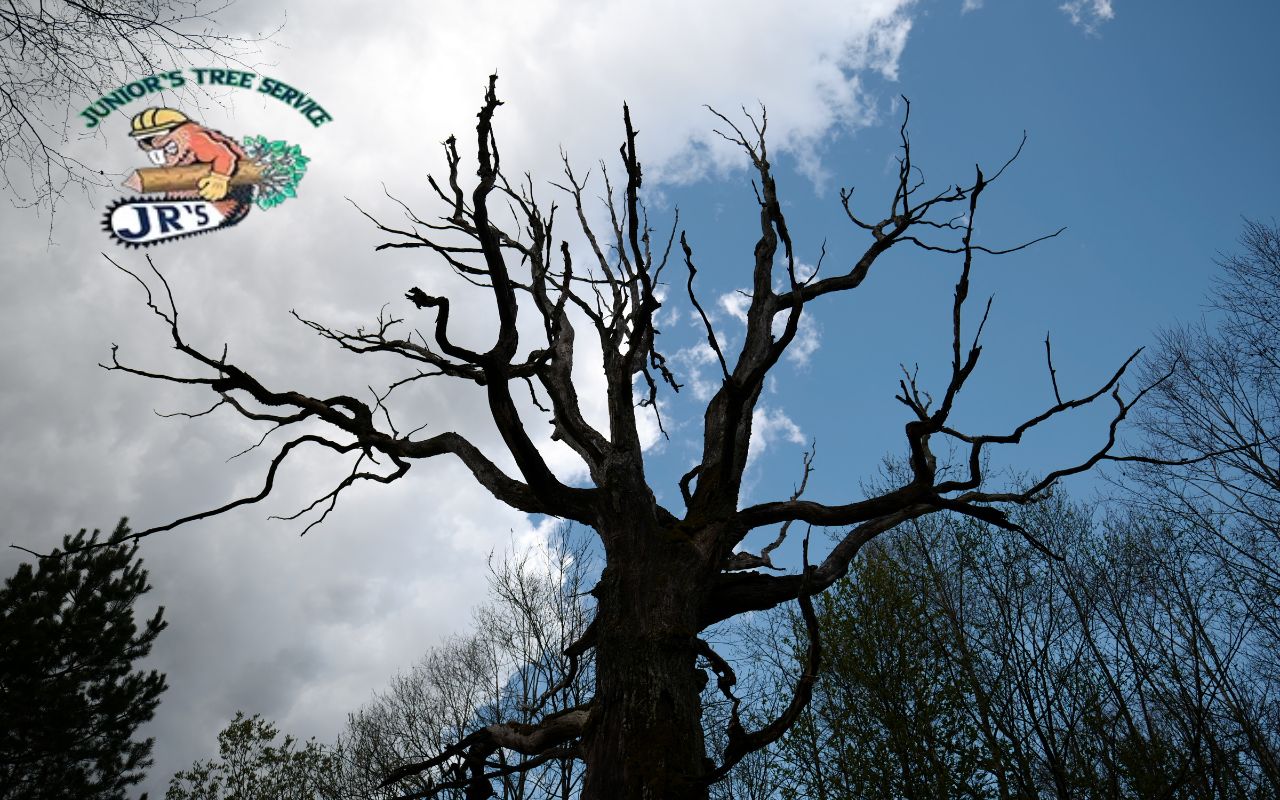
How to Tell if a Tree is Dead: A Quick Guide
Have you noticed your tree looking lifeless? You may wonder how to tell if a tree is dead. Trees provide shade, beauty, and even increase property value. But when they die, they can quickly become a danger. A dead tree can fall, damaging your home, car, or fence. Even worse, it could injure someone. You don’t want to wait until it’s too late. Learning the signs of a dead tree early can help you take action before problems arise. This guide will help you recognize when a tree is in trouble, what tests to perform, and when removing dead trees is necessary for tree safety.
Signs Your Tree May Be Dead or Dying
Trees don’t always die suddenly. Most of the time, they show signs of distress long before they reach the point of no return. If you spot problems early, you may be able to save your tree. A tree that is truly dead will often display clear symptoms. Here’s what to look for:
- No leaves in growing seasons – If a tree remains bare in spring or summer, it may be dead.
- Dry, brittle branches – Living branches bend; dead ones snap easily.
- Peeling or missing bark – Large patches of missing bark expose the inner wood.
- Fungus or mushrooms at the base – Fungal growth suggests internal rot.
- Deep cracks or splits in the trunk – These can weaken the tree’s structure.
- Sudden leaning – If your tree starts leaning, it may have root damage.
If your tree shows multiple of these signs, it may be beyond saving. But before deciding, you can perform some simple tests.
How to Test If Your Tree Is Dead
Sometimes, a tree looks dead but is actually still alive. Try these methods to check its condition:
- The Scratch Test – Use a small knife or fingernail to scratch a branch. If you see green inside, the tree is alive. If it’s brown or dry, the branch is dead.
- The Bend Test – A flexible branch means life. If the branch snaps easily, it’s likely dead.
- The Leaf Test – Check for buds or new growth. A lack of leaves may indicate serious health problems.
If all these tests show no signs of life, your tree may be dead. But what does that mean for your property?
Why Dead Trees Are a Safety Risk
A tree dead in your yard isn’t just unsightly—it’s a real hazard. Here’s why it’s important to act fast.
Falling Branches Can Cause Damage
Dead branches weaken over time. They can fall without warning, hitting cars, roofs, fences, or even people.
A Dead Tree Is More Likely to Fall in a Storm
Strong winds, rain, or ice can knock down an unstable tree. If your tree is near a house, driveway, or sidewalk, it’s a major risk.
Tree Disease Can Spread to Other Trees
If your tree died due to disease, it could infect nearby healthy trees. Fungus and pests spread quickly, leading to even more tree loss. Ignoring a dying tree can result in expensive repairs or injuries. But how do you know when it’s time to remove it?
When to Consider Removing a Dead Tree
Not every dead tree needs to be removed immediately. Some trees can remain standing for years before they fall. Others can collapse suddenly. Here’s when removal is necessary.
- The tree leans dangerously.
- Large dead branches hang over walkways or buildings.
- Fungi or rot are spreading.
- The tree is near power lines or high-traffic areas.
Should You Remove a Dead Tree Yourself?
Tree removal is dangerous and requires proper tools and expertise. Attempting to remove a large tree on your own can cause injuries or property damage.
Benefits of Professional Tree Removal
- Safety – Experts have the right equipment and training.
- Prevention – Proper removal stops the disease from spreading.
- Peace of Mind – No risk of injury or damage.
Dead trees pose risks, but there’s still time to act before they cause harm.
How to Prevent Trees from Dying
Sometimes, trees die naturally due to age or weather conditions. However, many trees die from issues that could have been prevented.
Regular Tree Maintenance
Taking care of your trees can keep them strong and healthy. Here’s what you can do:
- Water deeply – Drought can weaken trees. Watering at the base helps prevent stress.
- Prune regularly – Removing weak branches prevents disease and promotes growth.
- Check for pests – Insects and fungi can kill trees if left untreated.
How to Spot Tree Diseases Before It’s Too Late
Many tree diseases start with small symptoms. Watch for:
- Yellowing or wilting leaves.
- Black spots on leaves.
- Oozing sap or fungi on the trunk.
If you notice these problems, act quickly to save your tree.
FAQs About Dead Trees
Can a Dead Tree Come Back to Life? No, once a tree is fully dead, it cannot regenerate. However, some trees that appear dead may just be dormant. What Should I Do If My Tree Looks Half-Dead? If your tree has some dead branches but also some healthy growth, it may still survive. Call a professional to assess it. How Long Can a Dead Tree Stand Before It Falls? Some trees stay upright for years, while others fall within months. It depends on the species, condition, and environment.
Need Help with a Dead Tree? Contact Us Today
A dead tree is a serious hazard that shouldn’t be ignored. If you’re unsure about your tree’s condition, we can help. We have over 20 years of experience in tree care and removal. Our team provides free estimates and serves areas within 50 miles of Lewisville, TX. Contact us today!
